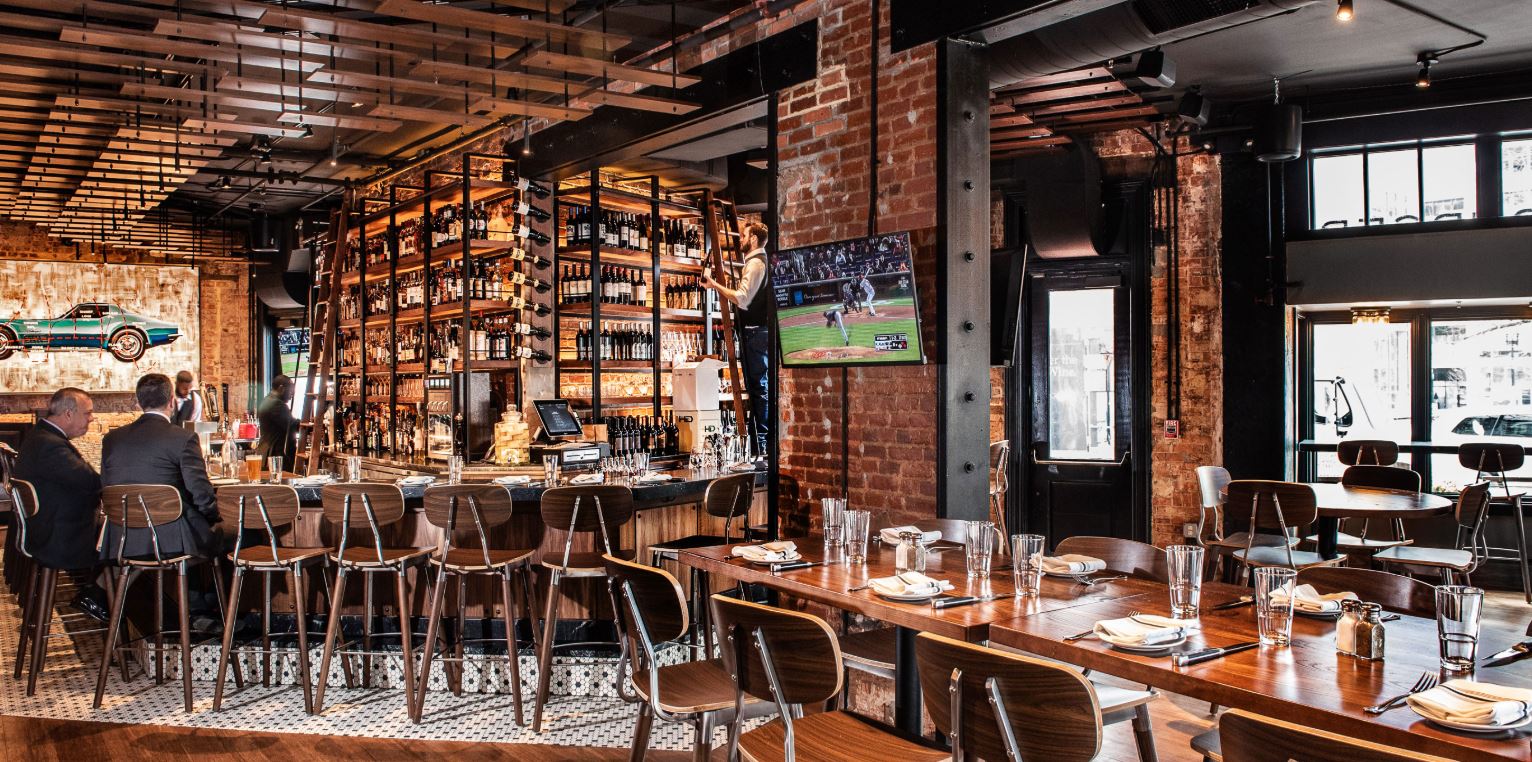Fine Dining Experience Islamabad: Delight In Lavish Cooking Pleasures
Fine Dining Experience Islamabad: Delight In Lavish Cooking Pleasures
Blog Article
Savor Authentic Asian Cuisine With a Pan-Asian Twist for a Cooking Journey
Starting a culinary trip via authentic Asian cuisine, enhanced with a Pan-Asian twist, provides a distinct chance to check out the rich tapestry of flavors that define the region's diverse culinary traditions. This experience invites you to enjoy the exquisite equilibrium of preferences-- sweet, salted, spicy, and sour-- harmonized by aromatic herbs and flavors. Envision the cutting-edge fusion of Thai curry and ramen or the unexpected delight of sushi burritos. As you ponder these enticing recipes, think about the social stories and historic influences that form them, each bite using a story waiting to be uncovered.

Exploring Pan-Asian Tastes
In the world of global gastronomy, Pan-Asian cuisine stands apart for its remarkable variety and the harmonious interaction of tastes from various Eastern cultures. This cooking strategy commemorates the rich practices and one-of-a-kind active ingredients located throughout the continent, producing a tapestry of preferences that is both gratifying and interesting. Trick to Pan-Asian food is its capability to stabilize different flavors-- pleasant, salted, spicy, and sour-- while highlighting the quality and high quality of each component.
From the umami-rich soy sauce of Japan to the fiery chili peppers of Thailand, Pan-Asian food offers a considerable palette of tastes. These aspects are usually combined in innovative ways, improving dishes with layers of complexity. For circumstances, using fragrant herbs such as lemongrass and cilantro, common in Vietnamese and Thai cuisine, adds a revitalizing brightness to dishes, while the incorporation of coconut milk supplies a creamy, abundant structure.
The emphasis on fresh fruit and vegetables and fragrant seasonings ensures that each meal is not only a feast for the palate but also for the senses. Pan-Asian food invites diners to start a cooking trip, checking out the huge and varied landscapes of Eastern gastronomy with every bite.
Blend Dishes to Try
While Pan-Asian cuisine is commemorated for its typical flavors, the modern-day culinary landscape is progressively embracing blend dishes that mix these traditional aspects with influences from various other areas. This ingenious technique not just honors the rich heritage of Oriental cookeries yet likewise presents unique preference experiences that interest contemporary tastes buds.
An archetype of such a fusion dish is the Korean-Mexican taco, where seasoned bulgogi beef is covered in a cozy tortilla, topped with kimchi and a spicy gochujang-infused salsa. This mix marries the strong, savory tastes of Korea with the vibrant, fresh aspects of Mexican cuisine. Similarly, sushi burritos have gained popularity, joining together the delicate creativity of Japanese sushi with the passionate, hand-held comfort of a burrito, often including combination active ingredients like tempura shrimp and avocado with a drizzle of wasabi mayo.
One more notable dish is Thai curry ramen, which infuses the luscious, fragrant seasonings of Thai curry into the comforting broth of standard Japanese ramen, developing an unified blend that tantalizes the senses. These fusion meals expand past simple uniqueness; they represent a culinary dialogue between societies, urging exploration and advancement in the globe of Pan-Asian cuisine.
Vital Active Ingredients and Flavors
To truly appreciate Pan-Asian cuisine, one have to recognize the necessary ingredients and spices that form its foundation. This diverse culinary style draws from a rich tapestry of Asian practices, using an unified blend of appearances and tastes. Secret ingredients consist of soy sauce, fish sauce, and oyster sauce, which present a tasty umami depth vital to Eastern meals. Complementary to these are rice vinegar and mirin, lending a delicate level of acidity and sweet taste.
Fragrant elements are critical, with ginger, lemongrass, and garlic being common throughout numerous Pan-Asian recipes. These components supply a great smelling base that enhances the intricacy of flavors. Spices such as celebrity anise, cardamom, and cinnamon introduce heat and personality, resembling influences from regions like China and India.

Cooking Methods and Tips
Understanding the art of Pan-Asian food needs experience with its distinctive cooking techniques, each contributing to the dynamic tapestry of tastes this culinary custom is celebrated for. Central to these techniques is the stir-fry, a rapid cooking method that preserves the dietary honesty and vibrant shades of ingredients. Using a wok, the stir-fry technique enables for also warmth circulation, crucial for attaining the particular structure and flavor equilibrium of Pan-Asian dishes.
An additional essential method is steaming, specifically widespread in Chinese cuisine. This gentle approach keeps the all-natural tastes and nutrients of active ingredients, making it excellent for fish and shellfish and veggies. Dumplings, a cherished staple, usually take advantage of steaming, causing soft, delicious structures.
Grilling, also essential, imparts smoky depths to visite site meals such as Korean bulgogi or Japanese yakitori (Instagrammable restaurants Islamabad). This method commonly entails marinading active ingredients, permitting tastes to my review here permeate deeply before cooking over an open flame or hot plate
Finally, mastering the art of balancing tastes-- pleasant, sour, salty, bitter, and umami-- is essential. Correctly layering these aspects can boost a recipe from ordinary to phenomenal, using a complicated and satisfying culinary experience that symbolizes the significance of Pan-Asian food.
Eating Experiences Worldwide
Around the world, Pan-Asian cuisine uses an unrivaled eating experience, commemorated for its rich tapestry of flavors and vivid presentations. This culinary phenomenon has actually transcended social boundaries, catching the hearts and tastes of food lovers worldwide. In cosmopolitan cities like New York, London, and Sydney, Pan-Asian restaurants serve as melting pots where culinary traditions from Thailand, Japan, China, and past converge, providing diners with a diverse mix of meals that highlight the region's variety.
The international charm of Pan-Asian food depends on its ability to offer both credibility and innovation. Chefs skillfully marry typical active ingredients such as lemongrass, soy sauce, and miso with contemporary techniques, resulting in dishes that are both refreshingly new and acquainted. This blend permits diners to begin on a culinary trip that respects heritage while welcoming modernity.
Moreover, eating experiences are raised with attentively designed atmospheres that show the ethos of Pan-Asian aesthetic appeals. From minimal Japanese-inspired interiors to vibrant Thai-themed rooms, each restaurant offers an one-of-a-kind setting that complements the culinary offerings. Because of this, customers are not simply taking in a dish however partaking in a cultural experience, making Pan-Asian eating a truly international go to my blog sensation.
Verdict
The expedition of Pan-Asian cuisine supplies a profound understanding of the elaborate interaction of tastes and cooking practices throughout Asia. By accepting fusion recipes such as Thai curry ramen and sushi burritos, the cooking journey not just highlights the versatility of conventional ingredients yet likewise showcases innovative modern strategies. This gastronomic experience, enhanced by crucial flavors and cooking approaches, supplies a special opportunity to value the cultural variety and culinary artistry that specify Pan-Asian cuisine on a global range.
Getting started on a cooking journey through genuine Eastern food, improved with a Pan-Asian twist, supplies an unique opportunity to explore the abundant tapestry of flavors that define the area's varied culinary customs.In the world of international gastronomy, Pan-Asian food stands out for its remarkable diversity and the harmonious interaction of tastes from various Asian cultures. Secret to Pan-Asian food is its capacity to balance contrasting flavors-- sweet, salted, spicy, and sour-- while highlighting the freshness and top quality of each active ingredient.

Report this page